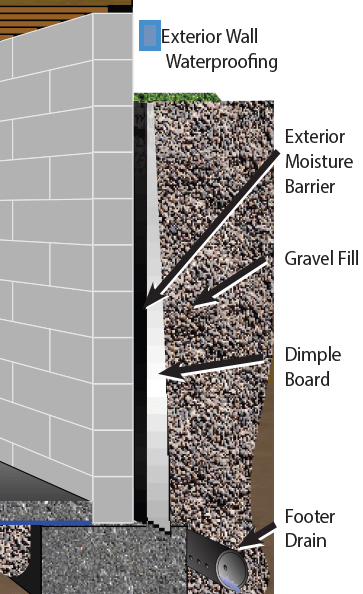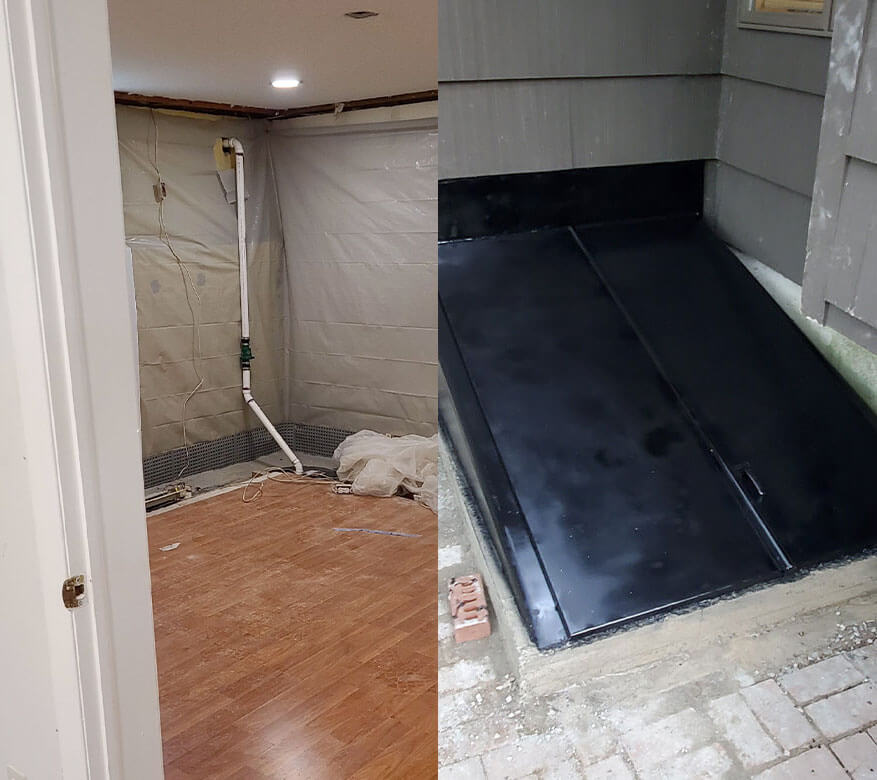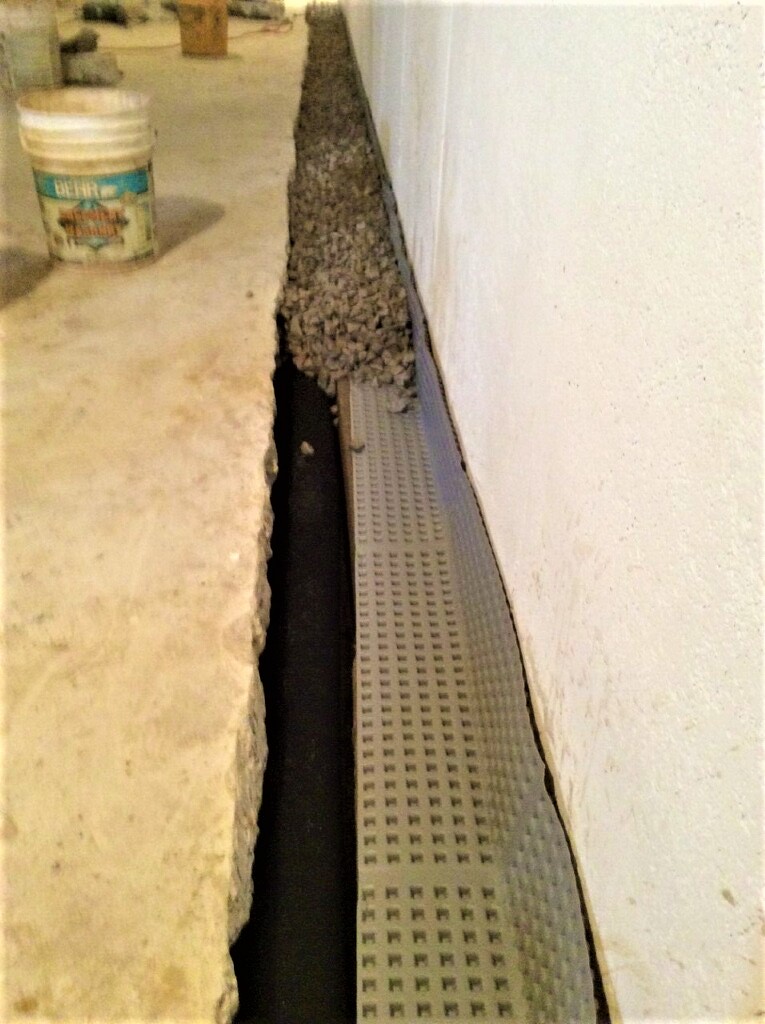Comprehending the Importance of Structure Waterproofing for Long-Lasting Structural Stability
In the realm of residential property upkeep, structure waterproofing stands as a crucial aspect in safeguarding architectural integrity. While frequently ignored, the threats posed by water invasion can lead to pricey and substantial damages that undermines the really structure of a structure. Comprehending the subtleties of waterproofing can reveal how it acts as an essential protection mechanism against these hazards.
Dangers of Water Breach
Water invasion's effect on a framework can be substantial, leading to a host of potential troubles that endanger the integrity of a building's foundation. As dampness permeates into the foundation, it can deteriorate the structural elements, resulting in cracks and erosion over time.
Additionally, water invasion can add to the deterioration of structure products. Concrete, masonry, and timber are particularly vulnerable to water damage, with prolonged direct exposure possibly causing them to rot, corrosion, or crumble. Such degradation not only affects the structural stability but likewise drops the building's value. Additionally, water intrusion commonly causes raised humidity levels within the structure, which can impact electrical systems and various other facilities.
One more considerable risk linked with water intrusion is soil instability. Excess dampness can change the composition of the dirt bordering the structure, leading to irregular settling and more architectural damages - basement leak repair Toronto. Quickly dealing with water intrusion is crucial to maintaining the durability and safety of any type of structure

Advantages of Waterproofing
Implementing structure waterproofing is a critical step in shielding a structure from the harmful effects of water invasion. Among the key advantages of waterproofing is the conservation of architectural stability. Water infiltration can deteriorate the structure, resulting in splits, damaging the overall framework, and potentially resulting in costly repairs. By developing a barrier against dampness, waterproofing helps keep the structure's toughness and durability with time.
Furthermore, waterproofing dramatically improves indoor air quality. Wetness seepage can promote mold and mildew and mildew development, which not only damages structure products yet additionally presents health risks to owners. An appropriately waterproofed foundation decreases these threats, adding to a healthier interior setting.
Moreover, waterproofing enhances building value. A well-protected structure is an appealing function for prospective customers, as it suggests positive upkeep and reduces the likelihood of future structural problems. This financial investment not just safeguards the current state of the home but likewise adds long-lasting worth.
Finally, foundation waterproofing adds to energy efficiency. By stopping wetness from going into the structure, it aids in maintaining regular interior temperatures, thus reducing the demand for too much home heating or cooling and bring about energy cost savings.
Common Waterproofing Approaches
When it involves protecting a structure's structure, choosing the suitable waterproofing technique is critical for efficient defense against dampness breach. Various techniques are employed based upon the specific requirements and conditions of the structure. Among one of the most typical methods is the application of liquid waterproofing membrane layers. These membranes, often made from polymers, are applied as a liquid to create a seamless, resilient obstacle against water penetration.
One more widespread approach is the installment of sheet membrane layers, which are pre-formed sheets of water-proof product, commonly bitumen or polyvinyl chloride (PVC), that are stuck to the structure walls. These sheets supply durable protection and are specifically efficient in locations with high groundwater levels.
Cementitious waterproofing is an additional widely-used service, particularly in brand-new buildings. This involves applying a cement-based substance combined with additives to develop a water resistant finish. It is very easy to apply and cost-efficient, making it a preferred option for household structures.

Indicators of Foundation Damage
To maintain the integrity of a structure's structure, identifying the indicators of prospective damages is as vital as choosing the ideal waterproofing approaches. Prompt recognition of these indicators can avoid pricey repair work and ensure resilient architectural stability. Among one of the most evident indicators of structure damages is the appearance of splits in the walls, floors, or foundation itself. These can vary in size and form, however straight or stair-step splits typically recommend significant structural concerns.
Uneven floors are another typical signs and symptom, typically triggered by the settling or shifting of the foundation. Homeowners may additionally discover doors and home windows becoming tough to open or close, suggesting possible imbalance as a result of foundation movement. Water intrusion indicators, such as moisture, mold and mildew, or mildew in the basement, suggest insufficient waterproofing or drain problems, which can worsen structure problems.

Picking the Right Specialist
Picking the best professional is essential for making sure successful foundation waterproofing projects. This decision considerably influences the high quality and durability of the work done, shielding your financial investment and making certain structural honesty. Begin by researching possible specialists with a tested record in foundation waterproofing. Search for companies with considerable experience and a strong profile of effective projects. Verifying their qualifications is essential; guarantee they are certified, guaranteed, and bound.
Request references from previous customers to get insight right into their professionalism and reliability. Additionally, testimonial online scores and testimonies to get a more comprehensive understanding of their online reputation. It is crucial to acquire several price quotes to compare rates and range of work supplied by each contractor. However, beware of price quotes that are substantially reduced than others, as this may indicate below average materials or craftsmanship.
Validate their understanding of regional structure codes and guidelines to avoid potential conformity Learn More Here problems. By taking these steps, you can choose a professional that will supply top quality, sturdy waterproofing options.
Conclusion
Structure waterproofing is important for maintaining structural honesty and protecting against potential damage caused by water invasion. By implementing efficient waterproofing methods, the dangers of mold and mildew development, material damage, and dirt instability are dramatically minimized.
In the realm of residential or commercial property upkeep, foundation waterproofing stands as a pivotal aspect in guarding architectural honesty.Executing structure waterproofing is a critical action in shielding a building from the detrimental impacts of water invasion. One of the most noticeable indicators of structure damage is the look of splits in the walls, floors, or foundation itself. Water breach indications, such as wetness, mold and mildew, or mildew in the basement, recommend poor waterproofing or drain issues, which can intensify foundation issues.
Foundation waterproofing is vital for keeping structural stability and preventing prospective damage caused by water invasion. - basement waterproofing Toronto